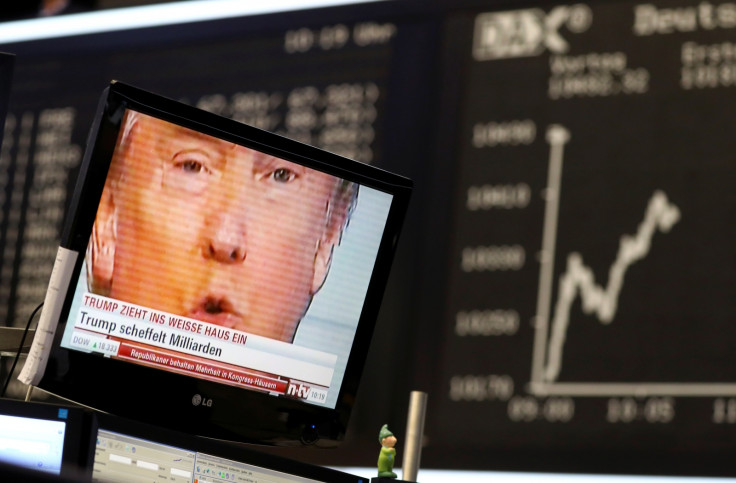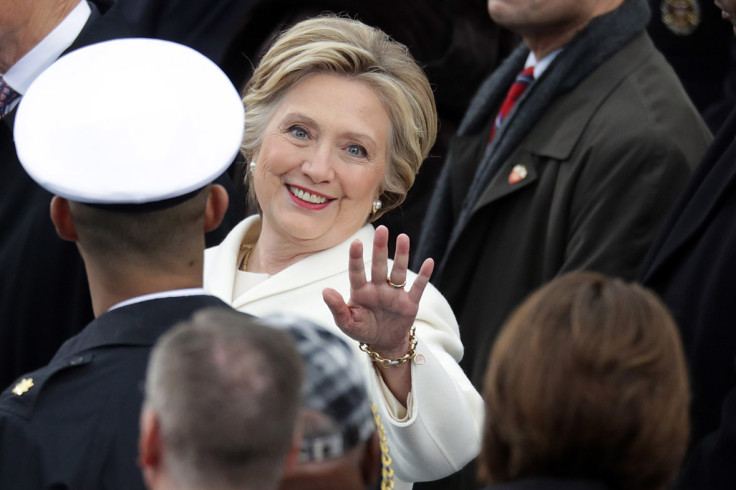Political revolution: How big data won the US presidency for Donald Trump
What is Cambridge Analytica and how did it manage to help Donald Trump beat the odds against him?

The polls showed Hillary Clinton was winning. The media thought the same. Billionaire property mogul and reality TV star Donald Trump was considered to be the least likely person to become US president – and yet, despite the controversial comments, the threat of lawsuits and lukewarm support from the Republican party, somehow he did it. But how?
As the US gears up for a new reign under possibly its least popular president in history, slowly more details emerge from the hard-fought election in November 2016 that show it wasn't won due to Trump promising to support questionable, possibly alt-right policies – it was due to an innate understanding of what the American people wanted. And that comes from data.
Data science is a rising field whereby computers are automated to analyse huge amounts of data and extract knowledge from it that provides insights on how people think, live and work. In the tech industry, this is known as "big data".
It's not an easy profession – incredibly smart data scientists are required to combine computer science, statistics and applied mathematics to visualise data in such a way to produce crucial information that might be missed if you had to rely on only humans to detect patterns, and the results, known as "analytics", are meant to help businesses make smarter decisions.
But now it seems that data science is becoming a big part of politics too, and politicians are starting to turn to the computer nerds to understand behaviour rather than relying on opinion polls and traditional political theory.
Understanding what a 'Trump voter' would want
Enter Cambridge Analytica, the US affiliate of a private British behavioural research and strategy communication company called SCL Group (SCL stands for Strategic Communication Laboratories).
Cambridge Analytica uses machine-learning techniques to identify personality traits, and was created specifically to work on US politics. The firm first worked for Ben Carson and Ted Cruz in the presidential primaries in 2016, before moving to work for Trump after Carson and Cruz lost.
"We were hired to understand how a Trump voter is different from a generic Republican voter. Most modelling is done on a typical Republican versus a typical Democrat, but we knew going into the race that Trump was anything but a typical Republican nominee. He brings a very unique style [and] stance on issues, a different bravado and name ID, so we built all our modelling on who we should talk to and how we should talk to them specifically for his campaign," Cambridge Analytica's head of product Matthew Oczkowski, who ran the Trump data campaign, tells IBTimes UK.
"A typical Republican is concerned about jobs and economy, national security and then the size of the government tied with taxes. But if you look at a Trump-specific voter and you isolate the 'Trump effect', the issue is quite different. The big issues are law and order (respect for law enforcement), immigration, and trade and wages (keeping manufacturing at home and how much money people actually make). Once you start to understand some basic things like this, you then understand the effect it will have on the electorate."
Cambridge Analytica didn't think Trump winning would be a sure thing: the day before the election day, the firm predicted that Trump had only a 20% chance of winning. But what the data scientists saw were three big trends that were pointing to a very different outcome to the election than had been expected.
Hillary didn't connect with the people

"The problem with public polls is that they were basing too much of their emphasis on voting history. We saw a massive increase in the rural, older white vote, a big decrease in African-American vote, and a slight increase in the Hispanic vote. If you were using political intuition, if the African and Hispanic votes cancel each other out and white vote is up, then it tells you that [the winner] will be a Republican," says Oczkowski.
"We started to see from the returns coming from absentee ballots and early voting showed that this election was going to be far different from 2012. [The Democrats] weren't speaking to the right people. Hillary Clinton employed a very 'Obama 2012'-like strategy, where all she had to do was turn out her own people and then she'd win the election. She made some grave miscalculations on the fact that she'd be able to turn out a similar electorate, because she's very different from Barack Obama as a candidate."
Working with the Trump campaign team, Cambridge Analytica's approach became focused on how to get the disenfranchised voter to want to vote, and the data collected became honed into very specific, targeted mini-campaigns.
Rather than spending lots of money on TV and print advertising, Cambridge Analytics, which was responsible for much of the paid media strategy and polling, focused on paid ads on Facebook, because the social network had a huge reservoir of data on millions of users, making it possible to target ads at potential voters who were angry about certain issues.
The data firm told Trump to travel out to hold "town hall" rally speeches in various states that catered specifically to the top concern of the group he was speaking to. Even emails and door-to-door canvassing were tailored to suit the individual concerns of voters.
This might sound rather creepy and invasive, but Oczkowski argues that this approach enabled Trump's campaign to reach people, rather than trying to rely on instinct and previous experience.
"Nothing that we do is based on trying to understand what 'Jane Smith' is going to do. We're all about using data to cluster people into specific groups because there's no way we have the resources for every specific individual."
Data beat gut instincts in the election
"I've worked in [the political] industry for a while now and I've seen a lot of people acting off their gut intuition. There's this thought that just because you've been in an industry for a long time, you have a fundamental understanding of how that industry works, and then data becomes less important because you know all these things," stresses Oczkowski.
"But in reality, especially in this election, having a proper understanding of data and what's actually going on allows you to then multiply the power of that intuition and discipline knowledge."
The thing is, Hillary Clinton did actually have really good data scientists working for her campaign too – the big data approach was first seen in Obama's 2012 presidential campaign and used to devastating effect. So what went wrong?
"Politics is a blend of art – the art of politics – and data, which is true science. If you put in too much art, you lose the data, and if you put in too much data, you lose the authenticity and message. I think that the combination of art and science is maybe where Hillary got into trouble. I do know she had some fantastic data staff on her team but I'm not sure how much the data spoke for itself and I worry how much political intuition got in the way of true science," says Oczkowski.
Data is all around us and is already influencing everything we do, says Cambridge Analytica, and businesses and the marketing industry needs to realise that universally, blanket marketing doesn't work anymore, and people get annoyed if organisations don't talk to them in the right way.
"All the data in the world isn't going to help you win an election or be the best commercial company in the space," says Oczkowski.
"You can't take a bad candidate with a good data programme and make them win an election. We already had a lot to work with, with Mr Trump – a good candidate with a message that resonated. Our job was to make him more efficient, help him spend resources in the best way possible because we knew he was going to be outspent by three to one."
© Copyright IBTimes 2025. All rights reserved.






















